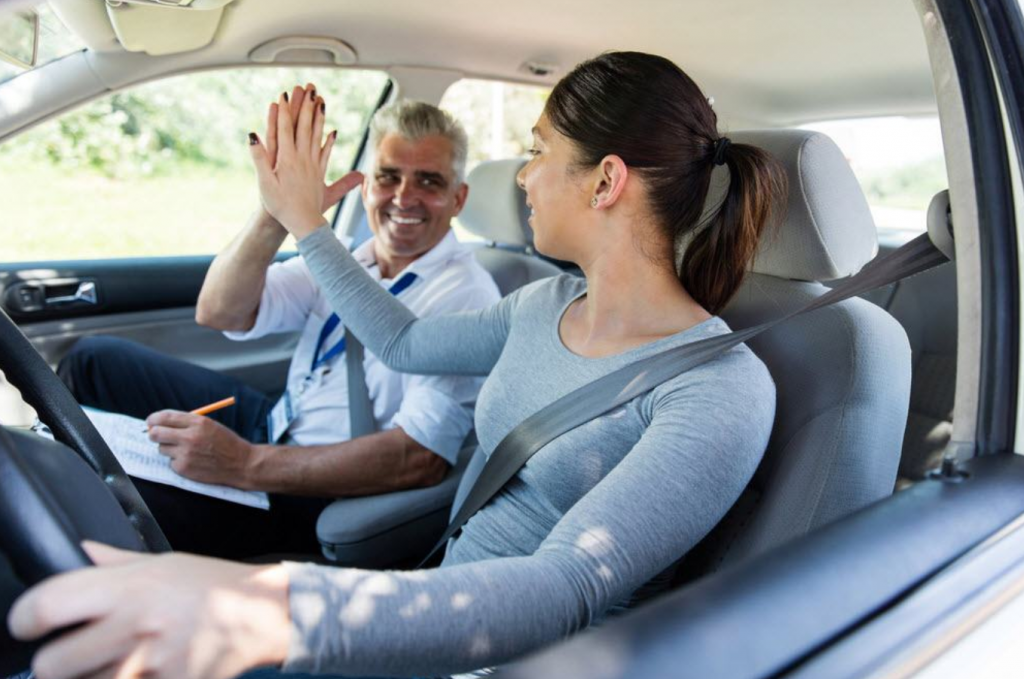Teaching your teenager to drive can be both thrilling and anxiety-inducing. To ensure a safe and successful learning experience, following some key safety tips is important. In this guide, we’ll cover everything from adjusting mirrors to planning out a safe driving route, so you and your teen can stay safe on the road.
Few things strike fear into the hearts of parents, like teaching their teenagers to drive. It ranks right up there with potty training and the first day of school as one of the most daunting parenting experiences. But as much as you might wish your child could stay young forever, it’s crucial to acknowledge your vital role in their driving education.
From helping them master the basics to instilling safe driving habits, you have a critical part to play in preparing your teen for the road ahead.
Sadly, teenage drivers are three times more likely to be in a deadly car accident than adults aged 20 or older. It’s up to parents and instructors to take their driving lessons seriously and help them avoid becoming just another tragic statistic. By prioritizing safety and instilling responsible driving habits early on, we can give our teens the tools they need to stay safe on the road.
Safety should be your top priority if you’re teaching your teenager to drive. To ensure a successful and secure learning experience, here are seven essential safety tips to keep in mind.
1. Master the Basics
When teaching your teen to drive, it’s important to begin with, lessons that are appropriate for their current skill level. This typically involves teaching them the basics, such as how to adjust the mirrors, operate the pedals, and use the turn signals and parking brakes. Before starting the car, it’s essential that your teen feels comfortable sitting behind the wheel and can repeat these steps back to you.
To get them started, consider beginning with an empty parking lot or similar space where they can practice starting, turning, and stopping the car without fear of hitting anything. As they gain confidence, they gradually introduce obstacles like traffic cones.
2. Map Your Route
When teaching your teen to drive, it’s important to have a plan for where you’ll be driving, especially during their early lessons. Since your child is navigating unfamiliar territory and doing everything for the first time, it’s crucial to provide structure and predictability to reduce anxiety and prevent errors. It’s also wise to avoid freeways and congested roads that may be too advanced for their skill level.
Without a clear plan, it can be challenging to avoid these areas and ensure a safe and successful driving experience.
3. Identify the Skills You Will Work On
To make the most of each driving lesson with your teen, it’s essential to identify specific skills for them to practice during each session. Whether it’s parallel parking or left-hand turns, these skills should be incorporated into the route you plan for each lesson. For example, if you want your teen to master left-hand turns, be sure to include plenty of opportunities for them to practice during your route.
By prioritizing specific skills and incorporating them into your plan, you can help your teen progress and become a more confident driver.
4. Minimize Distractions
To ensure a safe and focused driving experience for both you and your teen, it’s crucial to eliminate unnecessary distractions while they are learning to drive. This means avoiding playing music and keeping phones out of sight, including your own. As the passenger, you are the second set of eyes for your teen until they become more experienced, so it’s essential to remain alert and anticipate their next move.
Avoid distracting behaviors like texting or other activities that may cause your teen to panic, such as giving last-minute merging instructions. By minimizing distractions and staying focused, you can help your teen develop good driving habits and feel more confident on the road.
5. Don’t Raise Your Voice
While it’s inevitable that your teen driver will make mistakes, it’s important to remain calm and composed when addressing them. Avoid raising your voice or making general statements that may upset them, as this will not help them improve their driving skills. Instead, provide specific feedback on their behaviors and mistakes, such as suggesting they signal earlier next time.
It’s crucial to maintain a calm and respectful tone, even in stressful situations, such as when you narrowly avoid a collision or when your teen is upset or frustrated.
6. Practice Driving in All Types of Conditions
It’s crucial not to overlook the significance of teaching your teen to drive in various weather conditions and with limited visibility. Don’t cancel lessons due to rain, snow, or darkness. Instead, supervise your teen as they practice driving in these conditions.
Once they have mastered driving around your neighborhood, gradually introduce more challenging routes and traffic scenarios. This includes driving on highways, busy city streets, and winding roads, all of which will better prepare them to drive independently in the future.
7. Let Your Teen Practice As Often As They Can
Driving is a skill that can only be honed through practice and not just by reading or watching videos. To become competent drivers, teenagers need to log a considerable number of hours behind the wheel. The Centers for Disease Control and Prevention recommends at least 30 to 50 hours of supervised driving over a six-month period.
However, obtaining a driver’s license does not necessarily indicate mastery of driving skills. Licensed teen drivers are still more prone to accidents than adult drivers in simulated driving tests. Therefore, the more practice your teen gets with you, the safer they will be when they start driving independently.








